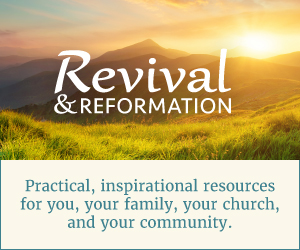ALTHOUGH it had rained the night before, the pavement seemed safe for normal travel as I headed to my second Sabbath morning service. Only a light fog blanketing the countryside reminded one of the moisture lingering on the ground.
Cresting a small rise in the road, the car suddenly hit an oil slick, veered across the oncoming lane, and, as was later reported by a concerned witness, crashed rearward into a large oak stationed nearby.
The shocking image of the onrushing tree was immediately replaced with the blurry face of the surgeon as he finished stitching the various scalp lacerations. Following another lapse of consciousness, I awoke in Room 204, bed B, just as the nurse began taking my blood pressure.
The Tables Turned
We frequently talk of empathy—putting yourself in the place of the patient—but it seemed that this was taking my work just a little too seriously. Now I was the patient and church members the visitors.
Yet, accepting my fate as inevitable, I reluctantly began adjusting to the situation and determined to learn what could be learned in the next few days. What follows is being written on hospital stationery the night before my dismissal. It is my candid answer to the question "What can be done to make the hospital a means of evangelism?"
A Captive Audience
Although the fact is quite obvious now, this writer had no idea of how captive a group of patients in the nearby hospital really is. But stop a minute and put yourself in our slippers. What do you find?
That's right! We are completely at your mercy. We're going nowhere in particular and have all day to get there. We are bored, lying in that same uncomfortable bed day after day. And, except for the critical or unconscious, we all long for company, even a clergyman of another faith.
Moreover, as in perhaps no other time in our lives, our normal defenses are down (especially in view of the gowns they provide nowadays). There is no front door to hide behind, no rough exterior to get in the way.
We are, in all honesty, an evangelistic audience quite comparable to what might be drawn through expensive advertising and thorough handbill coverage, but with many of the handicaps already out of the way.
Yet day by day pastors are so involved in the normal ministerial activities that they unknowingly overlook the evangelistic potential of nonmember hospital visitation. They even make special visits to their own members, and then do little more than shake hands with the patient in the neighboring bed. Perhaps they think to include him in the parting prayer; perhaps not.
Since this is an age of "methods," it would be unfair to take you this far without making some concrete suggestions regarding methods.
General Visitation. The very same day of admission, a minister of the local Church of Christ (I remembered his name, having visited his church just three weeks earlier) made the rounds on this floor.
His visit was friendly, cordial, and sincere. Although aimed at my room companion (whom he had visited earlier), he quickly included me in the conversation.
Yet, one caution should be interjected at this point. At no time must a minister abuse his unique hospital visiting privileges by preaching or doctrinizing the defenseless patients. This simply is out of order in any hospital situation.
Pastoral visits themselves have one goal: Establishment of rapport. By the very fact that you thought enough to take time to "see how you're coming along," you have demonstrated in the most dramatic method possible that Seventh-day Adventists are friendly, concerned people.
Then have the courtesy, since you are really an uninvited guest in their homeaway-from-home, to make your visits brief. A cordial, two-minute visit would be ideal, with five the very limit.
And by all means, don't be afraid to ask whether they would mind if you had a word of prayer before leaving. Having served as a chaplain in one Midwest hospital, I've found that only 1 or 2 per cent of those visited said they'd rather not.
Cordially tell the patients that you enjoyed meeting (or visiting with) them and be on your way with a smile.
Checking the Records
Some last words on visitation: Remember that most hospitals on admittance ask what denomination their patients belong to. Frequently this record is available and can prove quite valuable, especially when searching for the "unchurched" individuals. In most cases these persons will not be visited by any minister, giving you almost total monopoly.
One other item regarding these records: Remember that virtually all hospitals send out notices to ministers whenever their church members are admitted. Therefore, be sure to send a card to each hospital within your district just as soon as you move there (or whenever you change homes within a district), including your new mailing address, telephone number (s), church name, and name of the former minister (so he won't continue receiving the notices long after leaving for his new district).
One might think the last item too insignificant to mention, but the hospitals don't think so. In fact, in one district we received a notice addressed to the former minister of that district and forwarded from his previous district by the post office there. Two ministerial changes had taken place, and the hospital hadn't heard about either one. What kind of service can they provide if we fail at least to do our part?
Over the years one will discover this service to be a rich source for names of former Adventists living within his district, names he may not have gotten by any other means.
Then, of course, be sure to visit these folks as soon as possible. Your concerned visit could become a turning point in their lives, drawing them back into the church. After all, "backsliders," according to Elder Detamore, "are the very finest prospects you can find" (Seeking His Lost Sheep, pp. 16, 17).
(To be continued)














